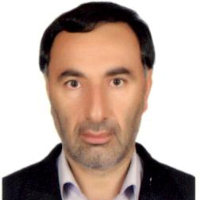The Study of Environmental Effects of Reservoir Dams on Surrounding Rural Areas (Case Study: Karun-3 Dam in Izeh County)
Author(s):
Abstract:
Introduction
Dams as one of the regional and national development infrastructures of each country have different effects on their surrounding regions such as rural areas. These impacts in various aspects and including environmental can be effective in sustainable rural development and its structural-functional framework. These impacts are two kinds. Rural settlements with regard to social and economic structures although in some cases accept positive effects of Dam construction, but their negative effects are not low. Karun-3 Dam in Izeh county as one of the largest reservoir dams in the country from dams is that due to the geographical features, have affected on Surrounding region especially rural areas. due to the current situation in rural areas, Identifying and explaining these effects is essential. The purpose of this research was investigate the environmental effects, Karun-3 Dam on surrounding rural areas.THEORETICAL FRAMEWORK : The global organization emphasis on preserve life about natural conditions more than twenty river network of world, that negative effects of Dams construction on these rivers on environment is more of their creation benefits such as agricultural water supply and produce electricity. According to the organization, one of negative effects of Dams construction on some rivers is Waste in use of water in agriculture and the destruction of the natural environment, plant and animal species. In addition, large dams could have Geomorphic and hydrologic impacts on the ecosystem of region. In other words, studies show that dams have Great environmental impacts on vegetation, diversity and change in coastal ecosystems, human settlements and so on. This point is important, the emphasis on suitable management of and a stable with having systematic view. Therefore, proper management of the dam and surrounding regions, attention to sustainable development perspective and systematic view is from basic necessities.
Methodology
The research methodology based on the nature is descriptive-analytical and based on the purpose is, functional. Among the villages around the Karun-3 Dam were selected 38 villages, with due to Specific geographical properties. The statistical population was 2531 households and the sample using a Cochran formula calculated 334 households and Finally, to increase the reliability sample, the number was promoted to 350 households. The questioning in level of rural household was done. Finally, data after collecting using SPSS statistical software were integrated. In addition, from 38 rural local managers were interviewed and in the form of Grounded Theory, interviews organized and presented. Also on the section of opinions of experts, 100 experts in Izeh County were investigated.Discussion
Karun-3 Dam had much impacts in environmental instability on rural areas. For example, increasing climate change at the local level has led., Because the lake of Karun-3 Dam has been to increase parameters such as temperature and humidity in the region and in its result, in addition to direct effects, other consequences has entered on agricultural activities and the general economy. With climate change, Crops cultivation and so on be also experiencing problems that with lack of planning, this issue has been intensified and Agriculture in the region has been reduced. Also cultivable rural land tenure both in upstream and downstream has led to decrease in the agricultural sector. While this section should be developed due to the potential created, but because Rural the agricultural sector has been a downward trend. Of hazards, Dam created many earthquakes in the region. That as a result is the destruction and creation of multiple gaps in rural housings. In addition, rural land use has changed. Also vegetation covers and water resources in many cases has changed and the number of wells has decreased. Based on the findings of qualitative, two factor Increase of local temperature and increase of the hazards is known the most important environmental impact of the dam. Evaluation of environmental variables in rural areas upstream from expert opinion shows, the situation is not only not improved after the dam, but has worsened and this issue shows comparison of the mean scale in after dams Construction (49/2). In addition, the findings showed that at the household level, Karun-3 Dam affected in trend of less favorable environmental variables around villages the upstream and downstream. Amount evaluated variables equal significance level is (Sig = 000/0), it is confirmed. Also Independent sample t-test indicates to better environmental variables villages upstream to downstream with a significance level (Sig = 0/000).Conclusion
Karun-3 Dam as a big reservoir Dam have been affected in decrease and trend of environmental variables of upstream and downstream villages. But this effectiveness has negative trend, not positive. Environmental variables in upstream rural areas. considering their average was better in before dam. By considering achieved average difference, is less situation upstream and downstream areas in after dam creation and Dam influence have more negative trend. Of course, we can say that this negative trend is the result of mismanagement. In general, the environment is affected by various human phenomena's including development projects. Using the results obtained can be in planning in the field be useful for decreasing the difficulties in rural areas.Keywords:
Language:
Persian
Published:
Journal of Research and Rural Planning, Volume:6 Issue: 1, 2017
Pages:
99 to 117
https://magiran.com/p1701041
سامانه نویسندگان
مقالات دیگری از این نویسنده (گان)
-
Knowing the effective factors in the branding of hospitality culture in Iran tourism
Hojat Ollah Sadeghi *, Seyed Skandar Seidaiy
Journal of Tourism and hospitality marketing research, -
Structural Pathology of Hadi Plan as the Most Comprehensive Rural Development Plan in Iran (Case Study: Kermanshah Province)
Amirai Zolfaghari, Eskandar Seidaiy *
Geography and Environmental Planning,


